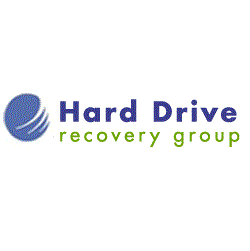|
We all need an external hard drive. It’s very convenient to have one because it allows us to carry all our data everywhere, we go.
(Via: https://www.technobezz.com/best/best-external-hard-drives-buy/) Fortunately for us, external hard drives have become a lot sturdier. This is not to say that they’re not prone to fail because they are. Even if they’re long-lasting, they will eventually fail. It just takes a longer time for them to fail. Then again, who are we to complain? External hard drives have come a long way.
(Via: https://www.technobezz.com/best/best-external-hard-drives-buy/) Here are the 5 reliable external hard drives that we can all get now. The first on the list is the Toshiba Canvio Basics 1 TB Portable External Hard Drive. If you’re looking for a sleek and compact external hard drive with a massive amount of space for storage, then this one’s for you.
(Via: https://www.technobezz.com/best/best-external-hard-drives-buy/) The second on the list is the Western Digital 4 TB Elements Portable External Hard Drive. If you’re dealing with super mega files and you need more than just 1TB of storage, then this colorful line of external drives is perfect for you.
(Via: https://www.technobezz.com/best/best-external-hard-drives-buy/) The Seagate Backup Plus 2 TB Portable Hard Drive is third on the list. This is a slim hard drive that you can easily carry around.
(Via: https://www.technobezz.com/best/best-external-hard-drives-buy/) Another Western external hard drive is fourth on the list. The Western Digital My Book Desktop External Hard Drive boasts of 8 TB of storage.
(Via: https://www.technobezz.com/best/best-external-hard-drives-buy/) The fourth on the list is the Silicon Power 1 TB Black Rugged Armor External Drive with shock proofing. This another portable external hard drive that’s built to last for, supposedly, a long time.
(Via: https://www.technobezz.com/best/best-external-hard-drives-buy/) These 5 reliable external hard drives are definitely worth the money. So, go right ahead and choose the one that suits your needs most. Just keep in mind that you also need a reliable hard drive recovery service in case your choice of storage hardware fails you. The Hard Drive Recovery Group specializes in both https://www.harddriverecovery.org/seagate-data-recovery.html and https://www.harddriverecovery.org/western-digital-data-recovery.html. The following blog post 5 Reliable External Hard Drives Available Now is courtesy of HDRG via https://www.harddriverecovery.org/blog/5-reliable-external-hard-drives-available-now/
0 Comments
RAID Data Recovery Services Provider Discusses Macs Clean Up And Deleted Files In New Posts8/28/2019 In two of its recent blog posts, Hard Drive Recovery talks about file system maintenance, computer cleanup and restoring deleted files from a USB drive using a Mac system. The posts continue the RAID data recovery service's dedication to customer education, of particular concern in the Mac world, where there is often far less technical information available for novice users. In the post, "Practical Ways To Clean Up Your Mac", Hard Drive Recovery Group discusses freeing up space on a Mac system - particularly important as Macs rarely provide the opportunity to either upgrade to a larger hard drive or add an additional internal hard disk to the system. Items like old documents and videos as well as duplicate files can become a major space hog on any Mac system, so searching them out and deleting them can do wonders for the user. "There are not as many file management applications for Macs in general, but the ones that are available tend to be quite usable for minor file clean up," said Maureen Davies, spokesperson for Hard Drive Recovery Group. "Each and every day computers tend to pile up files on their drives, so scheduled maintenance is critical for a smooth running machine." The article also addresses the idea of moving larger or rarely used hard drives to alternative storage media, such as an external hard drive or the cloud. This technique tends to be very valuable, as some of the largest files that a user has stored are frequently the ones that are used the least. "Easily one of the biggest disk space hogs on virtually any personal computer system tends to be video files, mainly because they tend to be so incredibly large," said Davies. "Fortunately, it is rare to constantly need all video files on an internal hard drive, so it is better to move those to a USB or external drive. The savings can be immense!" In a second blog post, entitled, "Recovering Deleted Files From USB: Can You Do It On Mac?", discusses how some Mac users are making use of a software called Disk Drill 3 to recover accidentally deleted files from a USB storage device. The software has been very popular among Mac users, and boasts a fairly good set of reviews. "While Hard Drive Recovery Group data recovery engineers rarely recommend data recovery software for potential customers because of the vastness of the market and the potential for malfunctioning or even damaging software, Disk Drill 3 is a reasonable package," said Davies. "Again, considering that the Mac iOS is such a smaller software ecosystem than that of Microsoft's Windows, programs like this are much harder to come by for the typical Mac user." The Disk Drill 3 software not only offers minor file and data recovery features; it also offers other solid file management tools such as the ability to find and delete duplicate files, as well as a strong backup feature. Essentially, it is one of the most robust, yet safest data recovery software products on the market for Macs. "Obviously, if a user encounters a full-on catastrophic physical hard disk failure, a product like Disk Drill 3 is simply not going to be effective at all," said Davies. "But, for minor accidental deletions, this is a reasonable product that at least is going to protect deleted files from being overwritten." As a RAID data recovery provider, Hard Drive Recovery Group does stress that data recovery software should really only be used on single disk, personal systems. RAID arrays and other complex multi-disk setups for business, says Davies, should only be examined and repaired by data recovery professionals, as the data on these systems tends to be quite valuable. from Hard Drive Recovery Group Hackers are smart people. They figure out codes for the sheer purpose of infecting our computers. The reason why they do it is because they want to steal critical information from our computers.
(Via: https://www.windowscentral.com/protect-your-pc-against-malware-ai-powered-software-now-just-40) How can we protect our computers from these crafty hackers? Luckily for us, there is an AI-powered software that can stop viruses and malware from attacking our computers.
(Via: https://www.windowscentral.com/protect-your-pc-against-malware-ai-powered-software-now-just-40) For just $40, we can get comprehensive protection. That’s a very affordable price to pay for that kind of protection.
(Via: https://www.windowscentral.com/protect-your-pc-against-malware-ai-powered-software-now-just-40) Now, if you do a lot of banking and shopping online, you’re definitely going to need this AI-powered software. One thing you need to know about the Heimdal Thor Foresight Home Malware Protection is that it’s not an anti-virus software. There’s actually a big difference between the two. An anti-virus software depends on its database of existing vulnerabilities. To prevent your computer from being infected, it uses its signature-based detection of malicious software. Unfortunately, that’s not enough. Cyberattacks have become more complicated nowadays. As a matter of fact, 75% of them are brand new. That means, they’re unlisted in the database of your anti-virus software, that is, if you one installed. The Heimdal Thor Foresight Home Malware Protection is more proactive. It identifies malicious connections by scanning all your incoming and outgoing internet traffic. The Heimdal Thor Foresight Home Malware Protection not only identifies malicious connections, it also blocks them. That way, your computer is protected from any kind of malware that could be downloaded and installed. In other words, it keeps the hackers away. You can have peace of mind that the personal information stored in your computer is safe and protected. You wouldn’t want a hacker to gain access to your credit card that you use for online shopping, would you? Didn’t think so. Consider the Heimdal Thor Foresight Home Malware Protection as supplement to your anti-virus software. They can work hand-in-hand to protect your computer. If you think it’s going to cost you an arm and a leg to experience comprehensive protection, think again. You can get lifetime protection for your PC for just $40. This is 20% off their usual price.
(Via: https://www.windowscentral.com/protect-your-pc-against-malware-ai-powered-software-now-just-40) Now is a very good time to really make use of this particular malware protection software. You’ll only be paying once to have lifetime protection. You can’t go wrong with that kind of deal. It would definitely be great to have software that could protect your computer from both malware and virus attacks. Too bad there's no software that could prevent hard disks from failing. Sure, you can always make use of a recovery software but that doesn’t prevent a hard drive from failing. Hard drives will fail, even without a malware or virus attack. Malware and anti-virus protection software won’t stop your hard drive from crashing or failing. When your hard drive crashes or fails, you need to have reliable people to turn to. For example, you need an expert who can help get back your data in case your hard drive fails. An expert with solid https://www.harddriverecovery.org/hard-drive-recovery.html experience is one who can help add another layer of protection to all the data stored in your computer. The following article Affordable AI-Powered Software Can Help Prevent Malware Attacks See more on: The Hard Drive Recovery Group Blog via https://www.harddriverecovery.org/blog/affordable-ai-powered-software-can-help-prevent-malware-attacks/ It’s a message you dread to see. When you plug in your external hard drive and see a fatal error message on your screen, you wonder what could possibly be wrong? With your crucial data stored in your external drive, you just hope against hope that everything is going to be okay. The last thing you need is for your external hard drive to fail you.
(Via: https://windowsreport.com/fatal-error-external-hard-drive/) Understanding why fatal errors occur can help you do the right thing. Here are the possible reasons why fatal errors occur on your external hard drive.
(Via: https://windowsreport.com/fatal-error-external-hard-drive/) Fortunately, you can fix these fatal errors. There are nine ways to do it. The first of which is to restart your PC. This is probably the simplest solution you can resort to when you see a fatal error message but it’s worth a try. Hopefully the message goes away when you plug in your external drive. If that doesn’t work, you can try swapping USB ports.
(Via: https://windowsreport.com/fatal-error-external-hard-drive/) You can also check if your drive is getting a good supply of power.
(Via: https://windowsreport.com/fatal-error-external-hard-drive/) Consider checking your USB cable. It’s bound to fail as well. When it does, change it.
(Via: https://windowsreport.com/fatal-error-external-hard-drive/) Another thing you can do to check on your external hard drive is to try it on another PC.
(Via: https://windowsreport.com/fatal-error-external-hard-drive/) If the fatal error message is still showing up, try rescanning your external hard drive.
(Via: https://windowsreport.com/fatal-error-external-hard-drive/) A fatal error message occurs because your external hard drive has some serious issues. Find out what these issues are by checking the Device Manager.
(Via: https://windowsreport.com/fatal-error-external-hard-drive/) Use the Windows hard drive error checking tool to scan for errors. This solution might be too techy for some folks. Nonetheless, here are the steps to go about it.
(Via: https://windowsreport.com/fatal-error-external-hard-drive/) If all else fails, seek professional help. The experts from the Harddriverecovery.org are trained to diagnose hard drive problems and at the same time, provide the most reasonable solution to the problem. While their basic hard drive recovery services include repairs of various external hard drives, they specialize in recovering data from both Seagate and Western Digital. So if your external hard drive is a Seagate or a Western Digital, there’s no need to download the troubleshooting software that comes with it. Your external hard drive is safer in the hands of the experts. The blog article Fatal Errors On External Hard Drives: Here’s How You Can Fix Them was initially published on http://www.harddriverecovery.org via https://www.harddriverecovery.org/blog/fatal-errors-on-external-hard-drives/ In two of its recent blog posts, Hard Drive Recovery Group discusses the ease of data recovery in most instances of data loss and also discusses a very powerful disk tool for Windows called PowerShell. The posts continue the data recovery service's dedication to customer education in the realm of hard drives, solid state drives and data protection. In the post, "Recovering Data From A Hard Drive Can Be Easy, According To Study", Hard Drive Recovery Group discusses options in cases of data loss. While a catastrophic hard drive failure can seem like an absolutely devastating situation (or even worse for those that need RAID data recovery) for most businesses and consumers, the fact is that there are certainly a few different avenues to take in order to recover the data on the drive. It also talks about the fact that many people simply assume that using a free data recovery software is going to be the source of data salvation. "One of the dirty little secrets of the data recovery software industry is that some of the applications out there actually damage the ability of a person to recover their data," said Maureen Davies, spokesperson for Hard Drive Recovery Group. "There tends to be a lot of calls from customers who first try to recover their files with a data recovery software, fail, and then call a data recovery service. The issue is that this often increases the cost of what originally might have been a very basic data recovery service." Data recovery software typically comes without a warranty in order to protect the developer. But, this can often lead to a lack of accountability, particularly with Mac computers. Meanwhile, if a hard drive has actually physically failed, these products are all but useless. "Hard Drive Recovery Group always offers a free over the phone evaluation to all potential customers with data loss issues of any kind," said Davies. "Certainly there is no obligation, and to be able to pick the brain of a very experienced data recovery engineer is hugely helpful to most people, particularly if they have very little hard disk experience." In a second post, entitled, "Use PowerShell To Look Up Disk Information", the company talks about Windows PowerShell, an application that allows more experienced users to call up information about a hard disk that can be helpful for diagnosis. This is an entirely free application that is built in to almost any version of Windows, and can clarify a lot for users. "While it may seem very technically difficult, the Windows PowerShell can provide a lot of information that not only helps the customer, but any technician that may be working with a hard drive," said Davies. "A lot of customers tend to get squeamish when they first see the old school DOS-like interface of the PowerShell, but its ease of use is quite remarkable." While tools like PowerShell can be helpful in diagnosing a failed or crashed hard drive, particularly when it comes to secondary drives, the tool is mainly informational in nature. But, it can provide a clue that savvy customers can work with to assess where they should focus their attention when it comes to data loss, even with RAID array setups. "In essence, the more informed a customer is about the condition of their hard drive, the more likely they are to understand what kind of service or software they should be looking for," said Davies. "This certainly doesn't provide any specific data recovery processes per se, but it does offer rock solid information. And in the end, as with anything, the more informed a data recovery customer is, the more satisfied he or she is going to be!" from Hard Drive Recovery Group Apple never fails to excite us. It always gives us something new to look forward to. With their latest iPadOS, we’re, again, tickled with excitement but what is it really about? How different is it from the operating system that we’ve all gotten used to?
(Via: https://www.laptopmag.com/articles/ipados-exclusive-ipad-features) We’ll go through each feature of the iPadOS but before we get right into it, here’s something to take note of.
(Via: https://www.laptopmag.com/articles/ipados-exclusive-ipad-features) With the misconception cleared up, let's now look at the features of the iPadOS. Let’s start with their multitasking feature.
(Via: https://www.laptopmag.com/articles/ipados-exclusive-ipad-features) The Apple stylus just got a lot smarter. Take a look at how the iPadOS has transformed it.
(Via: https://www.laptopmag.com/articles/ipados-exclusive-ipad-features) Give your fingers a break. The iPadOS includes all the gestures that can help you edit messages or documents easily.
(Via: https://www.laptopmag.com/articles/ipados-exclusive-ipad-features) Introducing the latest innovative feature called Sidecar.
(Via: https://www.laptopmag.com/articles/ipados-exclusive-ipad-features)
(Via: https://www.laptopmag.com/articles/ipados-exclusive-ipad-features) Another exciting feature of the iPadOS is that you can finally use an external storage with your iPad. Yes, finally you can plug one into your iPad.
(Via: https://www.laptopmag.com/articles/ipados-exclusive-ipad-features) These are just a handful of features that you can expect from iPadOS. One thing is for sure, you’ll be able to store more data with it. While that could be exciting, it could also be a downside especially if the hard drive fails. Suffice to say, even the external storage could fail as well. That shouldn’t derail from experiencing the iPadOS because the guys at from the Harddriverecovery.org can help you with your Mac, in case of a hard drive failure. These guys are trained to perform https://www.harddriverecovery.org/mac-data-recovery/ so that the life span of your Apple hardware is extended and your data are secure. Get To Know The Features Of The iPadOS was initially published on http://www.harddriverecovery.org via https://www.harddriverecovery.org/blog/features-of-the-ipados/ Need more space on your Mac? Well, it’s probably time to clean it up. You could do it manually or use a couple of programs that can help you save some of your precious time. Either way, you can clean up your Mac to have more space.
(Via: https://sea.pcmag.com/gallery/33096/how-to-free-up-disk-space-on-your-mac) The first thing you can do is to check all your files. This way, you’ll know what’s taking up so much space and you can delete the files that you don’t really need.
(Via: https://sea.pcmag.com/gallery/33096/how-to-free-up-disk-space-on-your-mac) You can also use a software than can help you find duplicate files.
(Via: https://sea.pcmag.com/gallery/33096/how-to-free-up-disk-space-on-your-mac) Moving your files to the cloud is another practical way to clean up your Mac. You might have to pay for a cloud service. It depends on what you choose.
(Via: https://sea.pcmag.com/gallery/33096/how-to-free-up-disk-space-on-your-mac) For more space on your Mac, consider clearing caches and removing temporary files.
(Via: https://sea.pcmag.com/gallery/33096/how-to-free-up-disk-space-on-your-mac) If you really need more space, you can either upgrade your internal storage or get yourself an external drive.
(Via: https://sea.pcmag.com/gallery/33096/how-to-free-up-disk-space-on-your-mac) Obviously, it’s pretty easy to clean up your Mac. It’s something you can do yourself. Simple tasks such as finding and deleting files are a no-brainer. But what if you accidentally delete something and you’re not able to find it anymore? There’s a possibility that you can end up doing that while cleaning up your Mac. If you seemed to have deleted a file accidentally, you would need someone who is trained to do a Mac data recovery. A https://www.harddriverecovery.org/professional-data-recovery.html firm is what you will need to find that someone. Practical Ways To Clean Up Your Mac is available on www.harddriverecovery.org via https://www.harddriverecovery.org/blog/clean-up-your-mac/ In two of its recent blog posts, Hard Drive Recovery Group discusses the availability of external hard drives for iPhone and iPad, as well as broaches the question of what situations a user may need a hard drive recovery service for. The posts continue the data recovery service's educational series on backup, data protection and safety intended on informing customers. In the post entitled, "Using External Drives With Your iPad or iPhone is Now Possible", Hard Drive Recovery Group discusses a brand new feature that is slated to come with iOS13 and iPad OS, both of which are slated to be released later in 2019. That feature, of course, is the ability for iPad and iPhone users to attach Lightning-based external hard drives or with an adapter, USB3 external drives. This can greatly lessen the need for Mac oriented data recovery. "This can only be seen as a major win for people who own iPhone or iPad computers," said Maureen Davies, spokesperson for Hard Drive Recovery Group. "One of the key difficulties that many people who own smartphones or tablets is that typically it is not possible to backup data without an intermediary device such as a PC or Mac. This will make Mac related backups quick and painless, and enable users to be far more consistent." The post highlights the relative ease of working with an iPad/External hard drive combination, particularly as it relates to the copying of files. One of the additional bonuses is that the devices with iOS13 will allow third party apps to import files directly from an external drive, which enables the user to avoid using the Files or Photos feature. The result is a more streamlined, simple to use file transfer process that finally mirrors the relative ease available to Windows users. "Taking a look at Mac products, there are usually more hoops to jump through when it comes to working within the Operating System, so these recent feature additions are hugely welcome," said Davies. "As the data on an Apple device gets safer, and is easy to backup, users can avoid the often steep price of Mac data recovery." In a second post, entitled "Why You Need A Hard Drive Recovery Service", discusses some of the main reasons why hard drive crashes occur, and what a user can do in the event that files are accidentally deleted. "One of the simplest problems to solve that causes the most user panic tends to be deleted files," said Davies. "Fortunately, the amount of data recovery software online that is built specifically for this purpose tends to be quite vast. Professional data recovery services rarely have to get involved with these minor file problems, simply because there are so many software based solution to it." While accidental deletions tend to be much less problematic for users, actual physical damage to a solid state drive or Mac hard disk drive platters or heads can make for difficult situations. In cases like these, there is almost no alternative to dealing with a professional, bona fide hard drive recovery service. "One of the mistakes that technically or mechanically knowledgeable people tend to commit the most is opening a hard drive and attempting to fix the drive by purchasing additional hard drive parts," said Davies. "The issue with many of these do-it-yourself repairs is simply that users tend to make errors that can literally destroy their data and make it inaccessible even to a professional. Once that line is crossed and the media or data is damaged, there is no turning back." Davies recommends that a data recovery service be called immediately in these situations, particularly if there appears to be some kind of electronic problem or clicking sound. "A user that understands when it's time to get help will be rewarded during the recovery process," said Davies. from Hard Drive Recovery Group Interestingly, you can. I didn’t think it was possible unit I came across this article and got curious about it. Apparently, there is a way for Mac users to recover some of their deleted files from a USB flash drive.
(Via: http://thetechnews.com/2019/06/13/recover-deleted-files-from-usb-flash-drive-on-mac-free-and-easy/) For you to use your Mac to recover deleted files from your USB flash drive, you would need a software to get it done. You can make use of the various flash drive data recovery software for Mac but according to the article, the Disk Drill 3 is the best.
(Via: http://thetechnews.com/2019/06/13/recover-deleted-files-from-usb-flash-drive-on-mac-free-and-easy/) It’s not enough to know that the Disk Drill 3 is the best software you can use on your Mac to recover data from your USB flash drive. To make sure that your deleted data are safe and retrievable, you need to know how the software works. As a matter of fact, you need more than just a bird’s eye view on how any flash drive data recovery software works on Mac. Whether you choose to use the Disk Drill 3 or not, you need to learn more about the software. That way, you can successfully recover deleted data.
(Via: http://thetechnews.com/2019/06/13/recover-deleted-files-from-usb-flash-drive-on-mac-free-and-easy/) If you decide to use the Disk Drill 3, you’re on the right path. One of the reasons why that particular software is highly recommended is because of its promise to keep data private. Data privacy is a crucial element in any data recovery software.
(Via: http://thetechnews.com/2019/06/13/recover-deleted-files-from-usb-flash-drive-on-mac-free-and-easy/) It’s no wonder why the Disk Drill 3 has been downloaded 10 million times. Seems like a lot of people are trusting it to get back their deleted data from their USB flash drive.
(Via: http://thetechnews.com/2019/06/13/recover-deleted-files-from-usb-flash-drive-on-mac-free-and-easy/) Here are a couple of features that make the Disk Drill 3 a trusted data recovery software.
(Via: http://thetechnews.com/2019/06/13/recover-deleted-files-from-usb-flash-drive-on-mac-free-and-easy/) Here are the steps in using the Disk Drill 3.
(Via: http://thetechnews.com/2019/06/13/recover-deleted-files-from-usb-flash-drive-on-mac-free-and-easy/) The Disk Drill 3 software seems pretty easy to use. Unfortunately, ease-of-use is not enough for you to trust any kind of software. What you need from a flash drive data recovery software is the guarantee that you’re going to get back your files. If that guarantee depends on your knowledge of the software, then think twice about using it. This is not to contradict the fact that the Disk Drill 3 is the best. It probably is the best; but if I have to learn more about it to successfully recover my files, then there’s just no guarantee that human error could get in the way. I am staunch believer that https://www.harddriverecovery.org/hard-drive-recovery-service.html shouldn’t be delivered by amateurs. There are https://www.harddriverecovery.org/data-recovery-experts.html who can do the job very well. The article Recovering Deleted Files From USB: Can You Do It On Mac? is courtesy of The Hard Drive Recovery Group Blog via https://www.harddriverecovery.org/blog/recovering-deleted-files-from-usb-can-you-do-it-on-mac/ In two of its latest blog posts, Hard Drive Recovery Group discusses data security and electronic identity protection, a subject of particular importance consider the current furor over the FTC's Equifax Data Breach Settlement. The posts are part of a continuing series of articles stressing data protection and safety with an aim to help data recovery customers safeguard their data to avoid future mishaps. In the post entitled "Is There A Difference Between Data Security And Data Privacy", Hard Drive Recovery Group breaks down two concepts that are inextricably linked, and yet somewhat different than each other. As stated in the article, "you can have security without privacy, but you cannot have privacy without security." "The realm of data security is one in which larger companies are more likely to be the stakeholders, as they tend to collect reams of data about customers, vendors and other stakeholders," said Maureen Davies, spokesperson for Hard Drive Recovery Group. "Meanwhile, data privacy laws and regulations are typically created to protect the data of the individual, and hold up companies with bad data security policies to critical scrutiny." While it is not typically possible for individuals to have control over their personal data once it has been divulged to a business, data privacy tools do prevent unauthorized corporate actors from profiting from that same data. These tools may include specialized browser extensions, encrypted messaging, proxies and ad blockers. Keeping data safely backed up also helps. Companies have a much more critical responsibility to keep their customers and prospects data private and tend to use data security tools such as identity and access management, data loss prevention and masking software. Enterprise servers such as Exchange and Oracle tend to offer robust security technologies as well. Meanwhile, in a second blog post entitled "Is Your Electronic Identity Safe", Hard Drive Recovery Group looks at some solid techniques to enable individual users to keep their personal data as safe as possible without going to absurd extremes. In today's social media-heavy environment, it may seem difficult to consider, but one of the key points to securing your electronic identity is shockingly simple: do not be too giving about personal information on the web. "One of the most difficult things for many people to understand these days is that everything you put on the Internet, including at places like Instagram and Facebook, puts you at risk for some kind of electronic identity theft," said Davies. "It is important when using any kind of social media to make sure privacy settings are correct for a user's comfort level. Checking privacy settings monthly will help ensure there are no ugly surprises down the line." While it remains a very important idea to shred all documents with personal information on them such as old tax records, W-2s and others, hard drives, thumb drives and mobile devices can provide a new avenue for identity thieves. It is always critical for a privacy concerned citizen to install a digital data shredder such as the freely available Eraser program. Other titles include WipeFile, Freeraser and Secure Eraser, each of which tackle digital data-shredding in a similar way. "The beauty of digital shredder programs is that they tend to be automatic, and it is often possible to delete data to extremely highly secure levels," said Davies. "Another bonus is that these shredders tend to be either free or extremely cheap, meaning there really isn't an economic reason to not install them automatically." As a data recovery service provider responsible for recovering thousands of terabytes of data per month from both companies and individuals, Hard Drive Recovery Group has always had a robust security policy when it comes to data. But even individuals can safeguard data easily - as long as social media is kept at arm's length. from Hard Drive Recovery Group |
About usAffordably priced Irvine, CA area data recovery services provider. Specializing in Macs, Dell, HP and IBM RAID recovery and damaged hard drive recovery services. Also offers Mac and laptop data recovery, as well as all forms of physical and logical data recovery. Archives
November 2019
Categories |







 RSS Feed
RSS Feed
